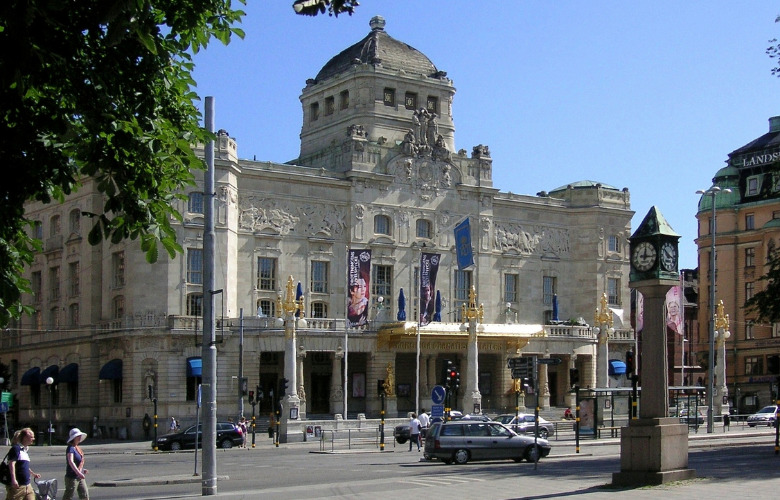
The Swedish Theatre Landscape… recently I began to wonder what it may look like. A bit of internet research revealed that there is a myriad of theatre activity in Sweden. In fact, Swedes are frequent theatregoers. Calculations over the last decade add up to 6 million theatre tickets sold each year. This in a country with a population of only roughly 9 million inhabitants. In recent European comparisons of participation in cultural activities, Sweden holds the leading position.
Yesterday, an old Swedish friend came over for dinner. As we talked late into the night, it dawned on me that I know next to nothing about the Swedish theatre landscape. Or that of any of the other Nordic countries for that matter.
If you are afflicted with the same level of cluelessness towards what’s going on up North, here a few scraps of information I’ve managed to gather for us through the Internet, to shed some light on the matter.
But other articles may follow, in which I will take a deeper look into what is, I am sure, an intriguing theatre and live entertainment landscape throughout the far North.
In Sweden, the theatre arts hold an important position in national cultural policy making.
Next to many small entertainment venues, there are three large national theatres. Two of them are located in Stockholm: The Royal Opera and The Royal Dramatic Theatre.
And then there is Riksteatern, which is the biggest theatre company on tour in Sweden. It can be described as Sweden’s national stage on tour.
Riksteatern is financed and owned by 240 local economic associations throughout Sweden and the goal is to promote and produce quality theatre for all of Sweden, outside the city regions.
Riksteatern was established in 1933 and has been on tour all over Sweden ever since. The Royal Dramatic Theatre (the national stage) and the Cullberg Ballet, for example, tour regularly with Riksteatern, with many of their most popular productions.
The bigger cities have municipal theatres supported with both local and national funds. Then, there are also many independent theatre groups. Some with their own performing spaces. Some touring, with varying degrees of local and national funding.
The national cultural policy adopted by the Swedish government and ratified by its parliament in 1974 was fundamental to the broad regionalization of cultural life in Sweden.
This was a conscious political investment to support artists and idealists throughout the country. Furthermore, it laid the groundwork for the establishment of regional theatres all over Sweden’s larger and smaller communities.
These regional theatres have become hubs for theatrical activity in their regions. And, often, they produce performances of the highest quality.
Usually, about half of the texts for theatre productions are of Swedish origin. And a large portion of these plays are produced by regional theatres.
The Scendatabasen compiles searchable information for the professional performing arts in Sweden: theatre, dance, musical theatre, opera, circus, mime, and performance art.
You can utilize search parameters for title, premiere date, playwright, director, choreographer, company, or the name of any receiving or producing theatre, dance, or musical theatre venue in the country. The Database contains documentation of the performing arts in Sweden dating back to 2007.
Lots of projects and supportive networks are in place for the performing arts.
One of these projects, conducted by the Svensk Teaterunion (the Swedish Theatre Union), is a theatre information centre which is also the Swedish Centre of the ITI (International Theatre Institute).
The Swedish Theatre Information Centre is a forum for co-operation and information within Swedish theatre and dance and the centre for exchange and contact across borders.
The centre arranges national and international seminars, conferences, and festivals.
They organize the Swedish Theatre Biennial, which is Sweden’s biggest national festival and theatre meeting, organized in different cities in Sweden in close cooperation with the regional, resident theatres.
If this has made you a little curious, here are a few links with further information:
Theatre in Swedish Society, by Susan Flakes
Emulating The Swedes: An Exploration Of The Developing Trends In Swedish Theatre For Young Audiences, by Amanda Wolgast
The Development of the Swedish Theatre System, by Daria Skjoldager-Nielsen and Rikard Hoogland
Swedish Theatres, by Anastacia Sampson
When Sailors Were Stagehands – Debunking a Bit of Rigging History
10 Strange Theatre Terms and Their Meanings


Liam Klenk was born in Central Europe and has since lived on four continents. Liam has always been engaged in creative pursuits, ranging from photography and graphic design, to writing short stories and poetry, to working in theatre and shows. In 2016, Liam published his first book and memoir, 'Paralian'.
Read Full Profile© 2021 TheatreArtLife. All rights reserved.

Thank you so much for reading, but you have now reached your free article limit for this month.
Our contributors are currently writing more articles for you to enjoy.
To keep reading, all you have to do is become a subscriber and then you can read unlimited articles anytime.
Your investment will help us continue to ignite connections across the globe in live entertainment and build this community for industry professionals.